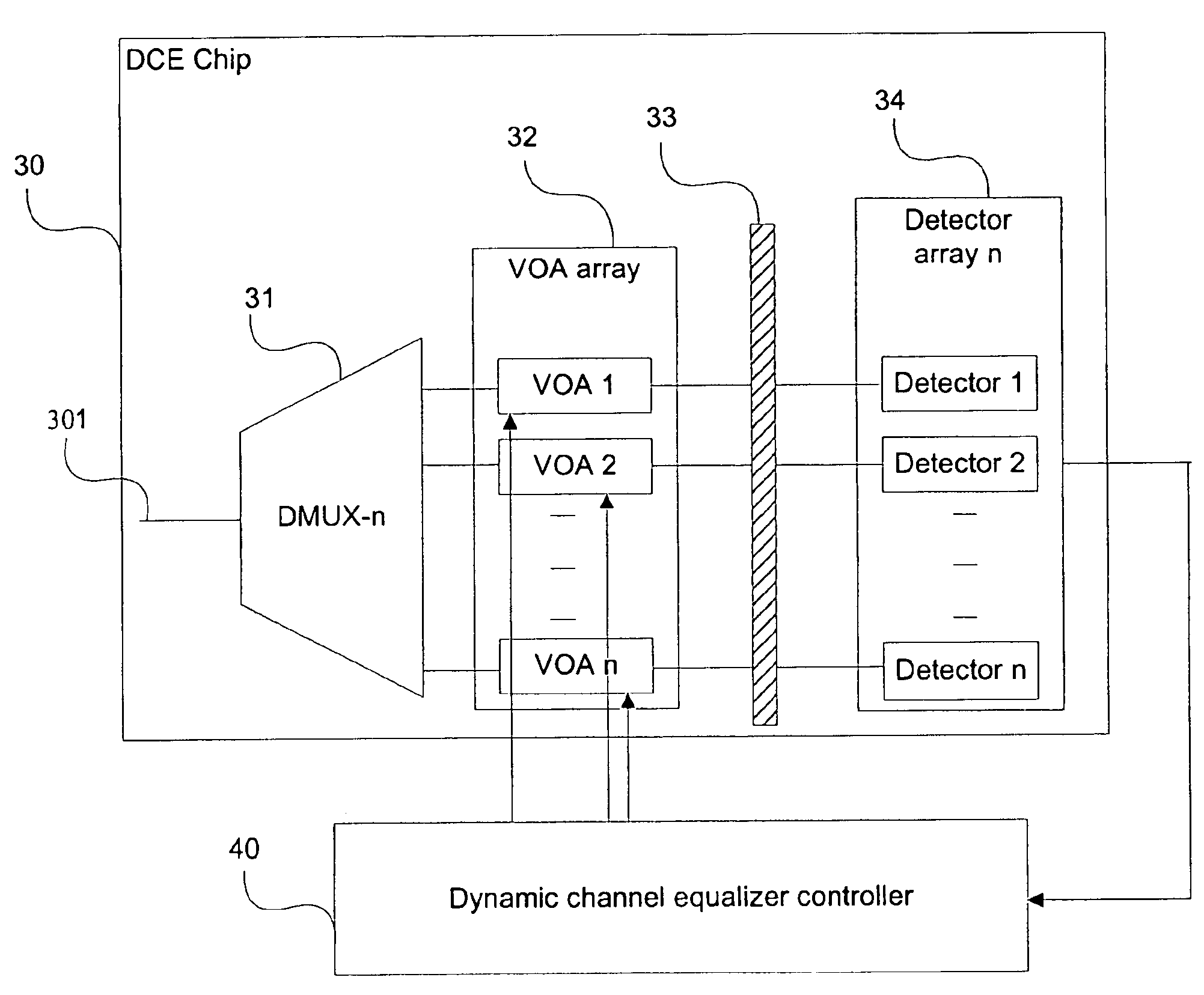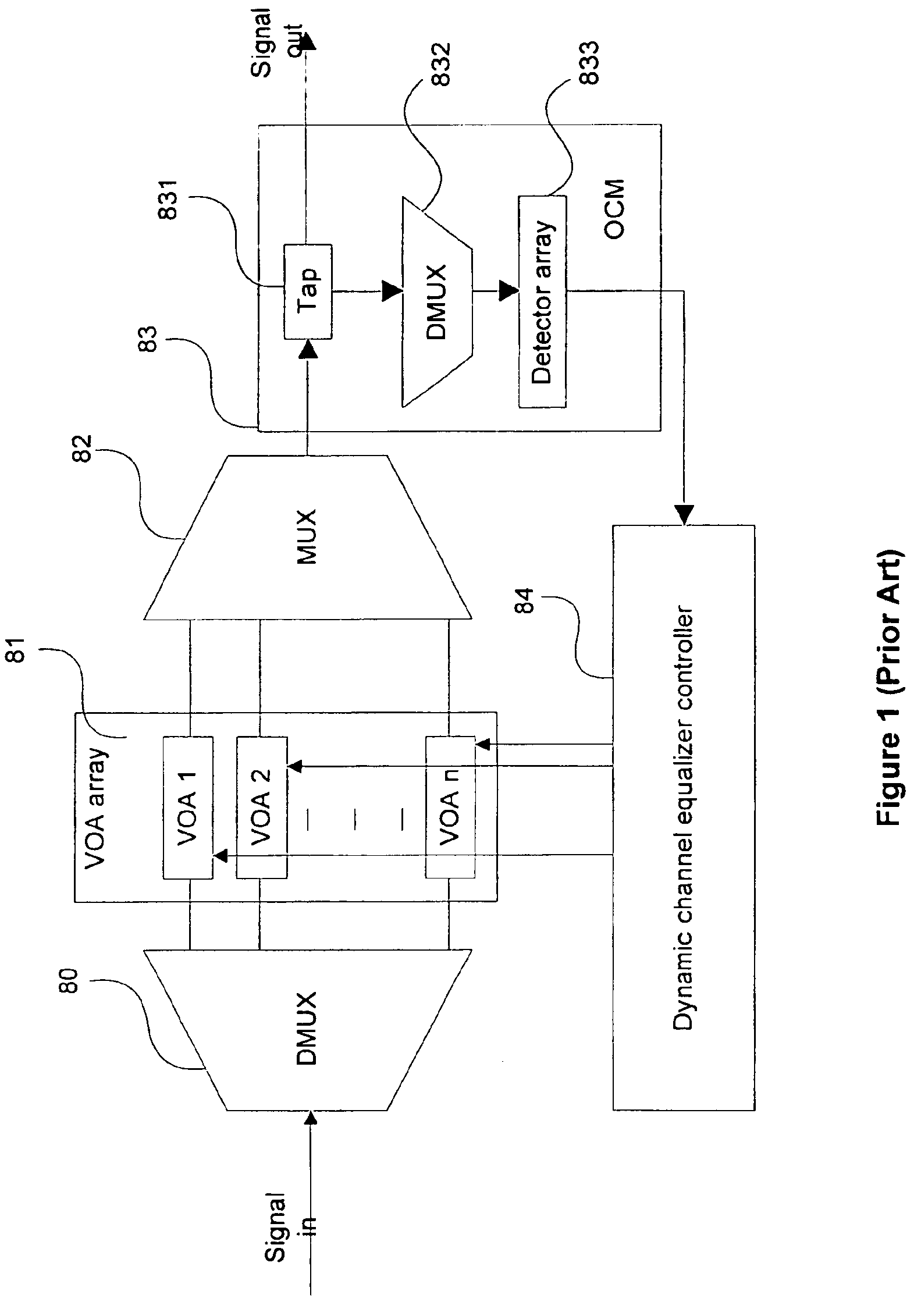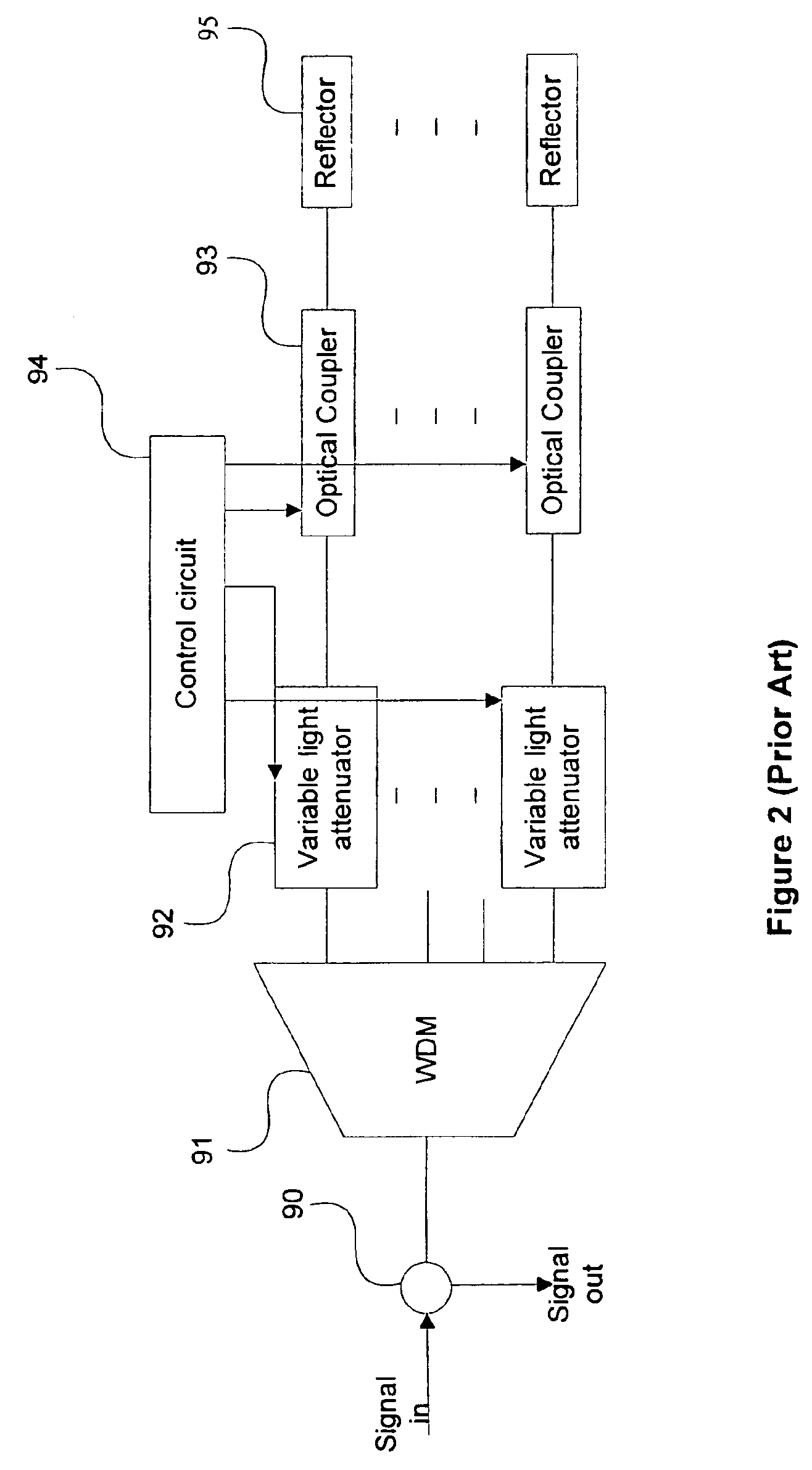Compact hybrid integrated optical dynamic channel equalizer
a hybrid, optical dynamic channel technology, applied in the direction of optical elements, multiplex communication, instruments, etc., can solve the problems of significant power and signal to noise ratio (snr) differential between the various channels, affecting the proper functioning of the optical network, and the different gain levels of the different channels in the optical network
- Summary
- Abstract
- Description
- Claims
- Application Information
AI Technical Summary
Benefits of technology
Problems solved by technology
Method used
Image
Examples
Embodiment Construction
[0021]Generally, the present invention provides a method and system for equalizing channel gain levels in a WDM transmission line. In its simplest embodiment, the equalizer comprises an optical demultiplexer, a variable optical attenuator array, a partially transparent reflector and an equalization controller. The optical demultiplexer receives an optical signal and demultiplexes it into a plurality of optical channel signals. The variable optical attenuator array has a plurality of variable optical attenuators. Each variable optical attenuator receives and attenuates one of the plurality of optical channel signals. The partially transparent reflector is positioned to reflect a portion of each attenuated optical channel signal to an optical multiplexer, and to transmit a portion of the remainder of each attenuated optical channel signal. The equalization controller receives the transmitted portions and controls each variable optical attenuator, by feedback, based on a comparison bet...
PUM
 Login to View More
Login to View More Abstract
Description
Claims
Application Information
 Login to View More
Login to View More - R&D
- Intellectual Property
- Life Sciences
- Materials
- Tech Scout
- Unparalleled Data Quality
- Higher Quality Content
- 60% Fewer Hallucinations
Browse by: Latest US Patents, China's latest patents, Technical Efficacy Thesaurus, Application Domain, Technology Topic, Popular Technical Reports.
© 2025 PatSnap. All rights reserved.Legal|Privacy policy|Modern Slavery Act Transparency Statement|Sitemap|About US| Contact US: help@patsnap.com



